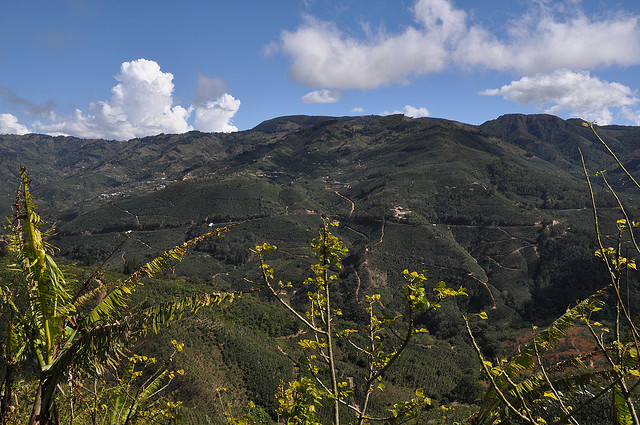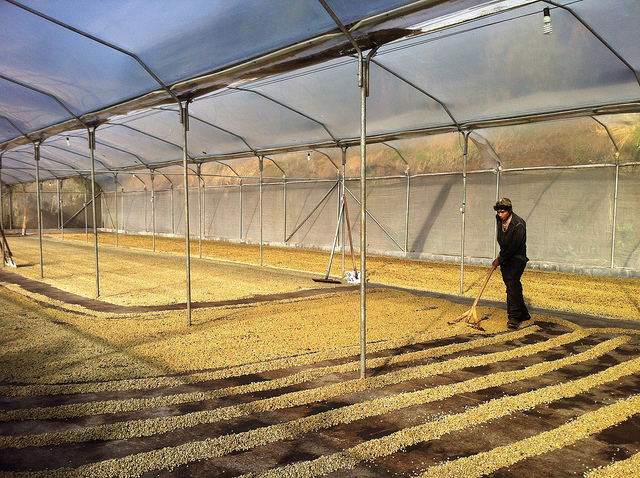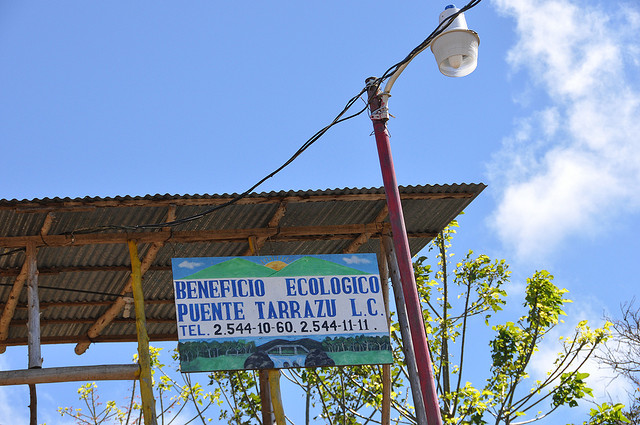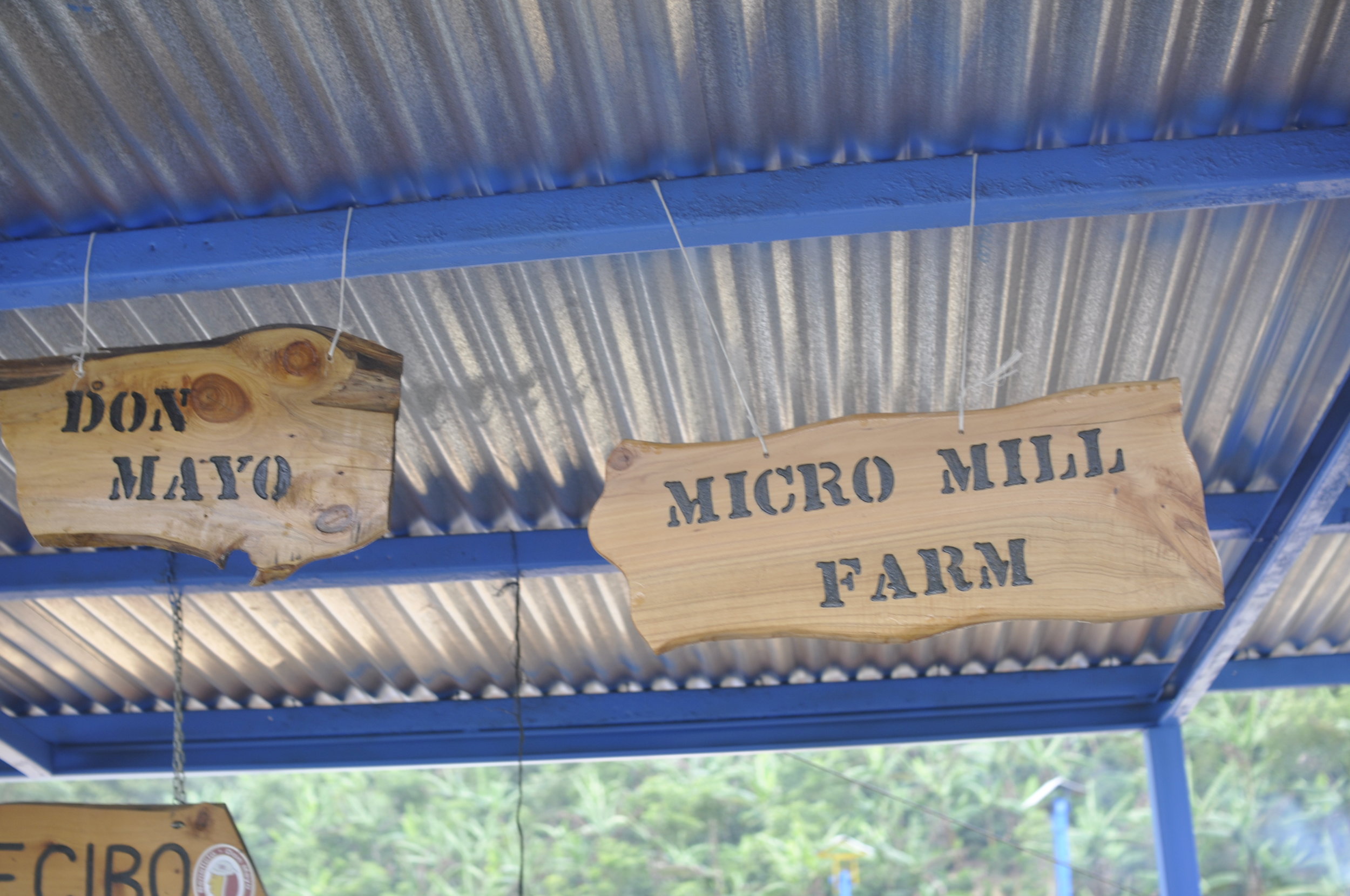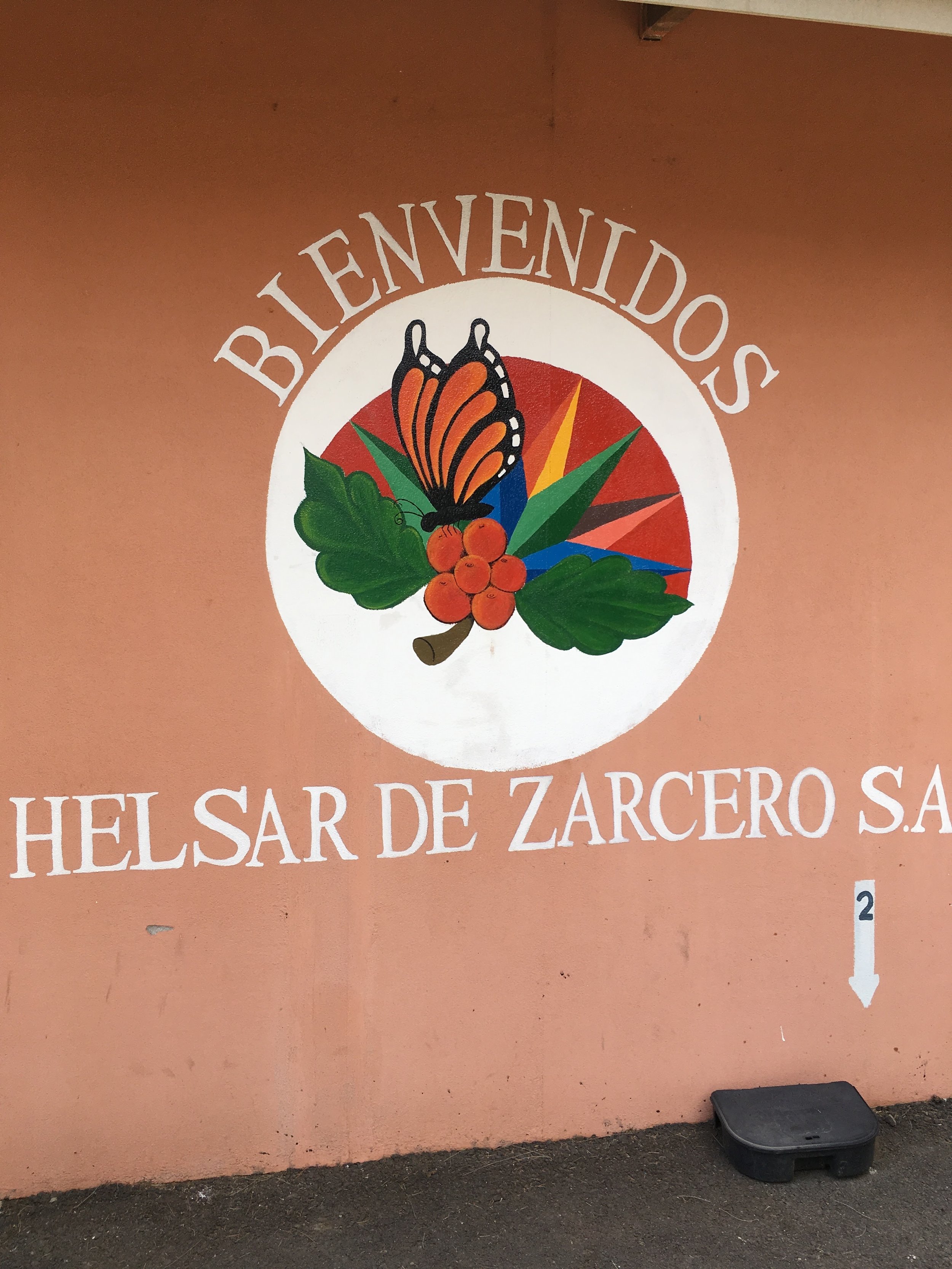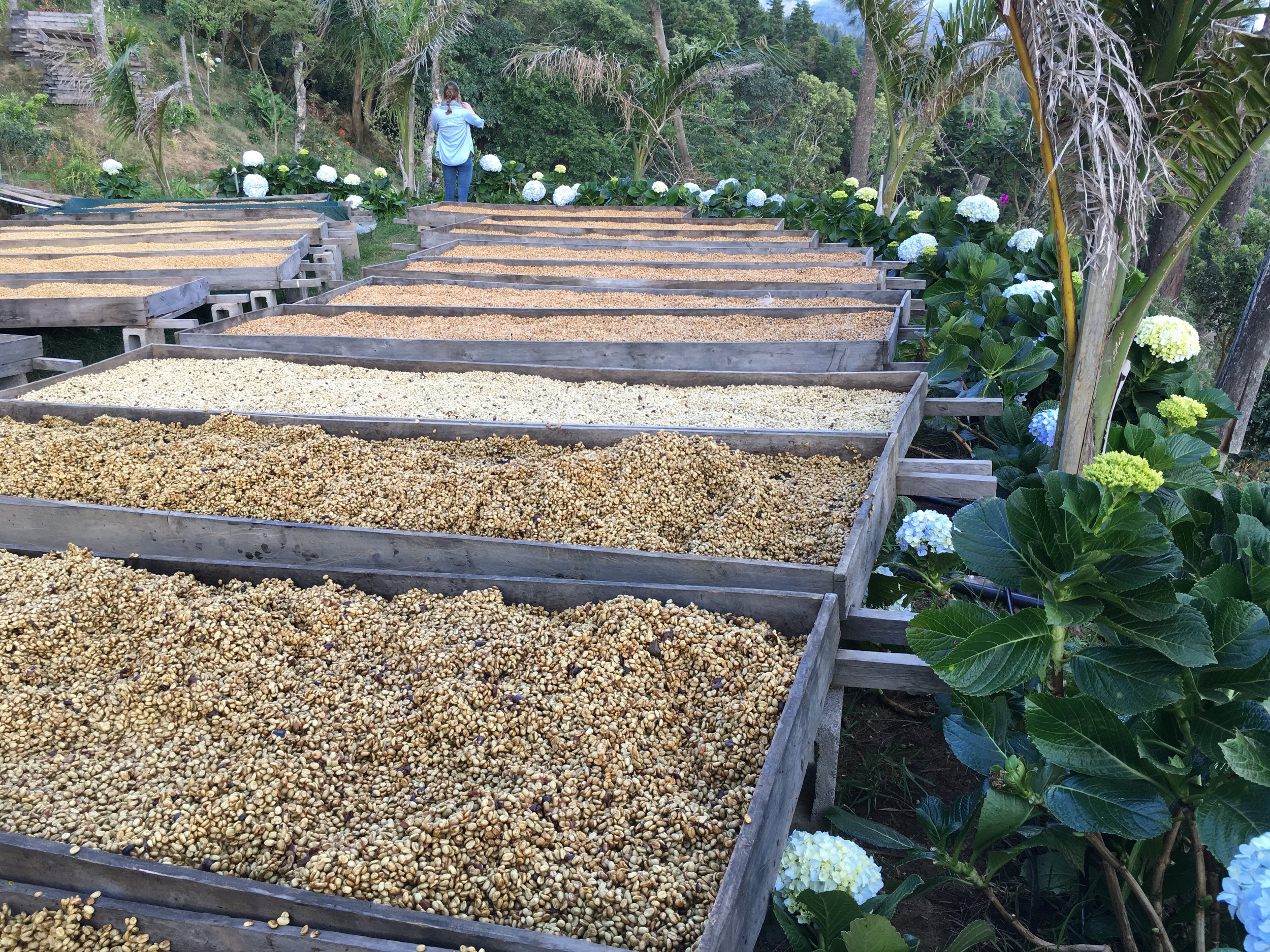VARIETY & PROCESSING OPTIONS GALORE
It makes perfect sense that the world's largest coffee Arabica germplasm bank, CATIE, is located in Costa Rica; the country offers the widest array of coffee processing and plant varieties in the world. This is one of the few origins where younger generations are eager to continue the family coffee business. Given the massive challenges the industry is facing, we need that younger generation who are waiting to step up.
Scroll down to:
Learn more about the coffee market in Costa Rica;
Meet our partners at origin;
Read our blog posts on Costa Rica;
Download photos;
See our Costa Rica offers list;
Download coffee information sheets.
Familia Calderón Martinez of Grantios de Ortiz micro mill in Tarrazú, Costa Rica. The four sisters, from left Jocksileny, Joyce, Johana and Diana Calderón Martínez, run the beneficio while their father, Omar, manages the family’s coffee plantations.
history and market
Until recently, coffee in Costa Rica was, as is typically the case in most Latin American coffee countries, either grown by estates or by smallholder farmers who sold their cherries to cooperatives for processing and marketing. For smallholders, this meant almost a complete dependence on international market prices. Cooperatives were often unable to market Costa Rican coffees in such a way that they fetched higher than average (low) prices.
Starting around 2008, some enterprising smallholder farmers started using loans from their local banks (between $10,000 - 20,000 USD) to buy small versions of industrial wet milling equipment. Other producers quickly adopted this business model for their farms, and thus the “micromill evolution” was born.
The timing of the micromill evolution fortuitously coincided with another evolution occurring throughout Australia, North America and Europe: that of specialty coffee roasters opening micro-roasteries. Costa Rican micromill producers then found themselves with an open and eager marketplace for their specialized coffees. In addition to differentiating themselves by micromilling, many producers have found other ways of enticing specialty buyers, namely by experimenting with processing and the planting of exotic varieties. The planting of exotic varieties has especially taken off within the last few years, as farmers have gained more control over the management of their micromill operations.
OUR PARTNERS AT ORIGIN
Exclusive Coffee was established in 2008 and has been front and center since the beginning of Costa Rica’s “micromill evolution”, having partnered with some of the pioneering farmers of this movement. The Exclusive team works in three microregions — Central and West Valleys & Tarrazú — that they have identified as having the best potential for producing high quality coffee due to these regions’ altitudes, climate and soil conditions.
CCS co-founders, Robert and Bjørnar, have been working with Exclusive and some of their micromill partners since Exclusive’s beginning, initially through Kaffa Oslo, CCS’ sister-company. CCS too, has been working with Exclusive and its partners since its beginning in 2012.
Since then we have established strong partnerships with a handful of micromills, professionals who impress us each season with new and exciting cup profiles coming from ever-ambitious processing techniques and an increasing number of different coffee varieties. Costa Rica is amongst the most cutting-edge of the coffee origins we work in. We are always curious to see what new innovations this constantly evolving origin has in store for us.
Costa Rica BLOG POSTS
Use the arrows on the right to browse all Costa Rica blog posts.
PHOTOGRAPHS FOR DOWNLOAD
Right click on a photo below and select “Save Image As” to download.











